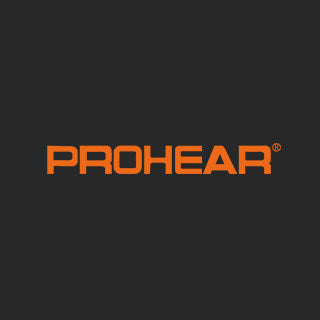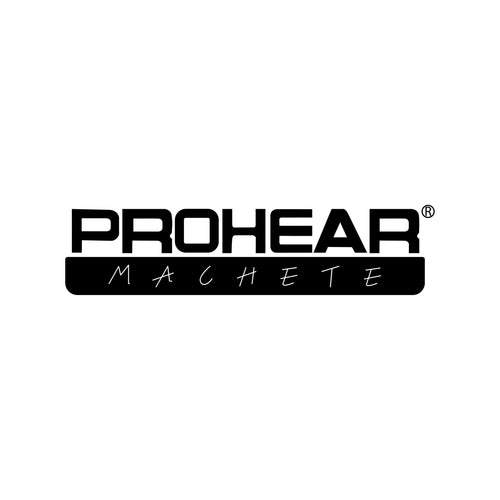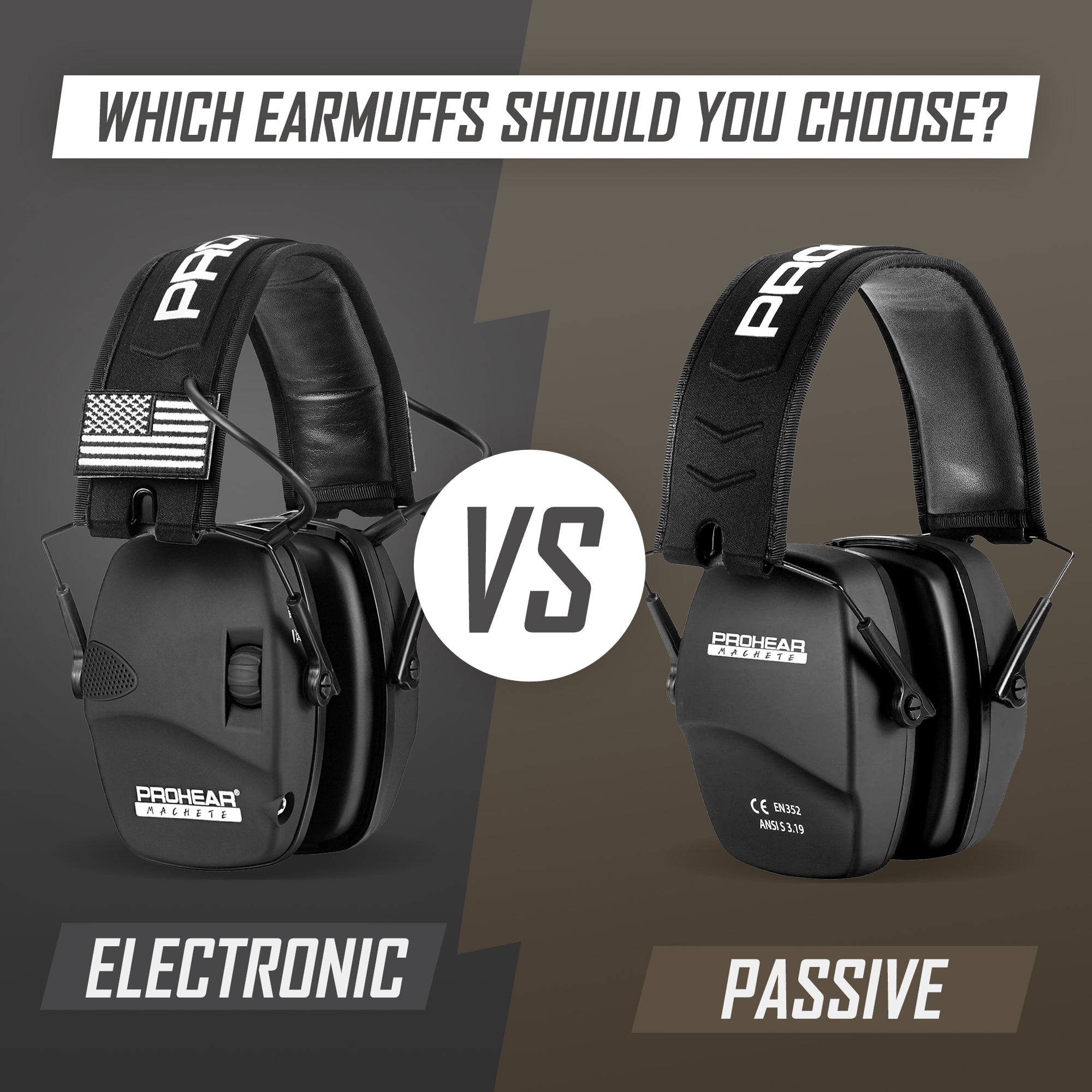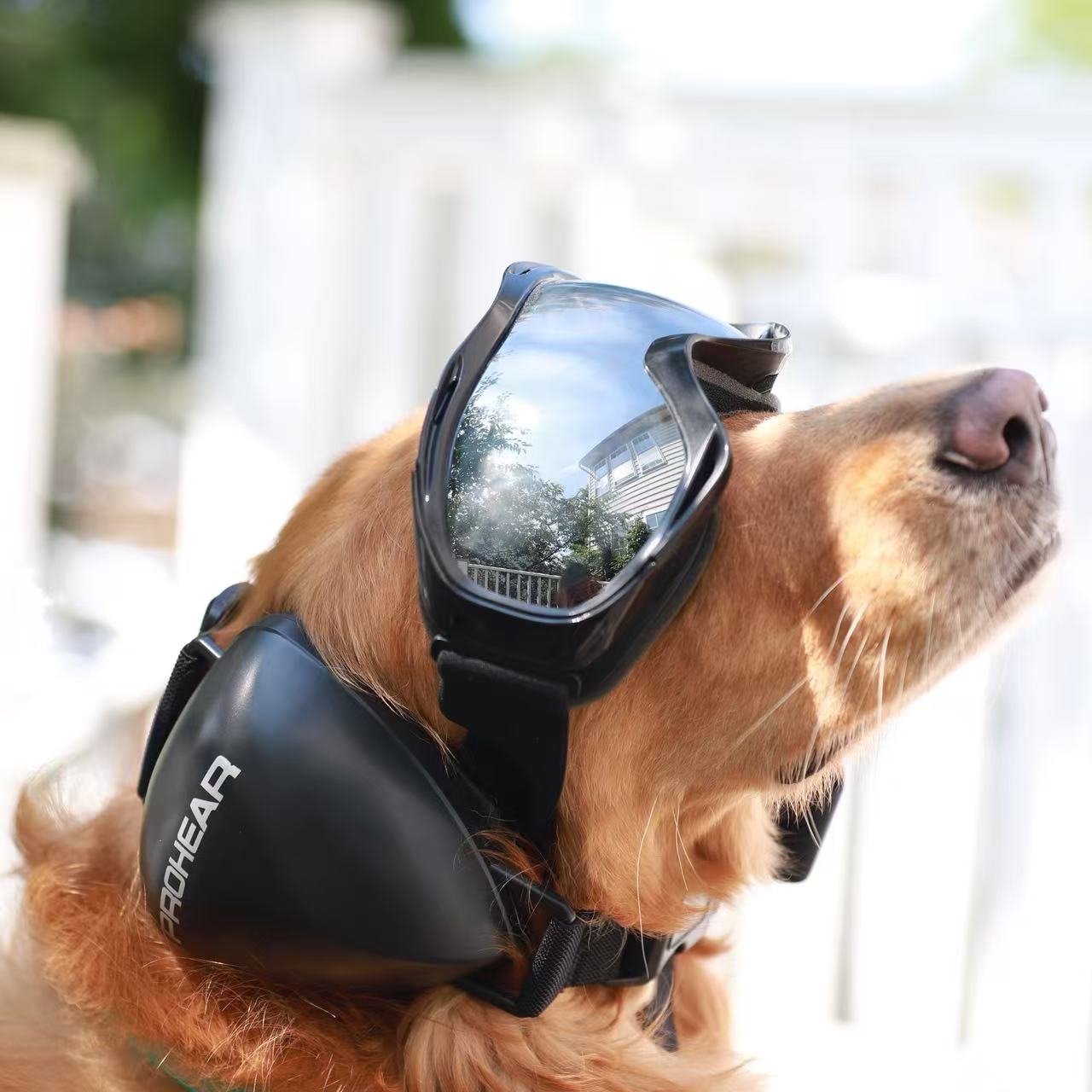Protecting your hearing is essential whether you’re a professional shooter, an outdoor enthusiast, or someone regularly exposed to loud noises. Choosing the right hearing protection can make a significant difference—not just in safeguarding your ears but also in maintaining situational awareness and comfort during use. One of the most common questions we get is: Should I go with electronic ear muffs or passive ear muffs? Each has its unique advantages, and understanding these will help you make the best decision for your specific needs.
Understanding Electronic and Passive Ear Muffs
What Are Passive Ear Muffs?
Passive ear muffs rely purely on sound-blocking materials—like dense foam and specially designed ear cushions—to physically reduce noise entering the ear. They do not require batteries or electronics, making them simple, durable, and often more affordable. Their Noise Reduction Rating (NRR) typically ranges between 20 to 30 decibels depending on the model.
Passive muffs are excellent at blocking consistent loud noises like machinery or gunfire but do not enhance or amplify ambient sounds. This means you get solid noise isolation but limited ability to hear conversations or environmental cues while wearing them.
What Are Electronic Ear Muffs?
Electronic ear muffs incorporate built-in microphones, amplifiers, and speakers. These devices actively monitor ambient sound and selectively amplify safe sounds—such as voices or range commands—while instantly suppressing harmful noises like gunshots. This “smart” function allows shooters and workers to maintain critical situational awareness without sacrificing hearing protection.
Electronic ear muffs often come with additional features like volume control, Bluetooth connectivity, or multiple sound modes tailored for shooting, hunting, or industrial environments. Their NRR may be comparable to passive models but with the added benefit of active noise management.
Comparing Key Performance Metrics
| Feature | Passive Ear Muffs | Electronic Ear Muffs |
|---|---|---|
| Noise Reduction Rating | High (up to 30 dB) | High (typically 20-27 dB) |
| Situational Awareness | Limited (sound mostly blocked) | Enhanced (amplifies safe ambient sounds) |
| Battery Required | No | Yes (battery or rechargeable) |
| Durability | Very durable, fewer failure points | More delicate due to electronics |
| Additional Features | Usually none | Bluetooth, sound modes, communication |
| Price Range | Generally more affordable | Typically higher due to technology |
Which One Should You Choose?
Choose Passive Ear Muffs If:
- You want a simple, reliable, and maintenance-free solution.
- You operate in extremely noisy environments where full noise blocking is critical.
- Budget is a primary concern.
- You rarely need to hear conversations or ambient sounds while wearing hearing protection.
Choose Electronic Ear Muffs If:
- You need to communicate clearly with teammates or hear range commands.
- You want flexibility with different sound modes or connectivity features.
- You spend long hours wearing hearing protection and value comfort and versatility.
- You participate in activities requiring both noise reduction and situational awareness, like IPSC shooting or hunting.
Real-World Use Cases: Hearing Protection in Action
At PROHEAR, we see professionals and enthusiasts benefiting from both types depending on their activity. For example, competitive IPSC shooters often prefer electronic ear muffs because they can hear squad communication and environmental sounds while still protecting from the loud gunshots. On the other hand, construction workers or landscapers may favor passive muffs for their ruggedness and simplicity.
PROHEAR’s Recommended Products
- PROHEAR 066 Electronic Ear Muffs — Featuring Bluetooth connectivity, multiple sound modes, and a Noise Reduction Rating of 23 dB, ideal for shooters who need both protection and communication. Priced at just over $30, it offers exceptional value and is a must-have for beginners.

- PROHEAR 016 Passive Ear Muffs — Lightweight and durable, with plush ear cushions and an NRR of 26 dB for those who want maximum noise isolation without electronics. Priced at just over $10

Conclusion: Choose What Fits Your Needs Best
Both electronic and passive ear muffs offer excellent hearing protection but cater to different priorities. If communication, situational awareness, and advanced features are important to you, electronic ear muffs are the way to go. If you prefer simplicity, ruggedness, and maximum isolation, passive ear muffs remain a trusted choice.
At PROHEAR, our mission is to help you protect your hearing safely and comfortably—no matter which type you choose. For personalized advice, product demos, or to find the perfect hearing protector for your activity, feel free to contact our team.




